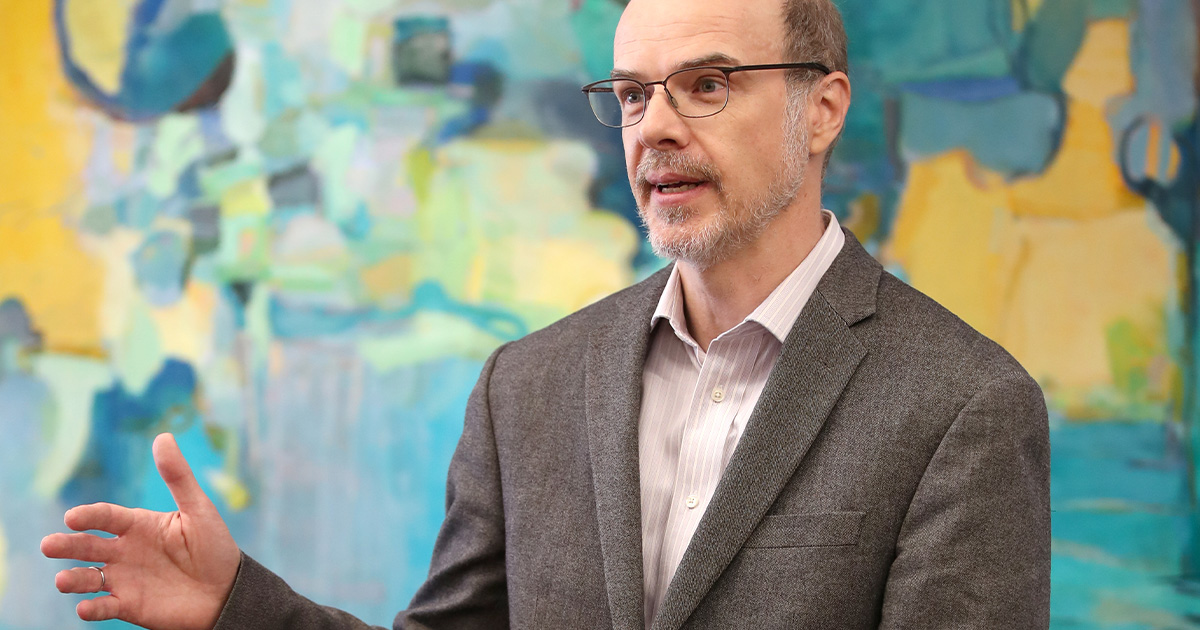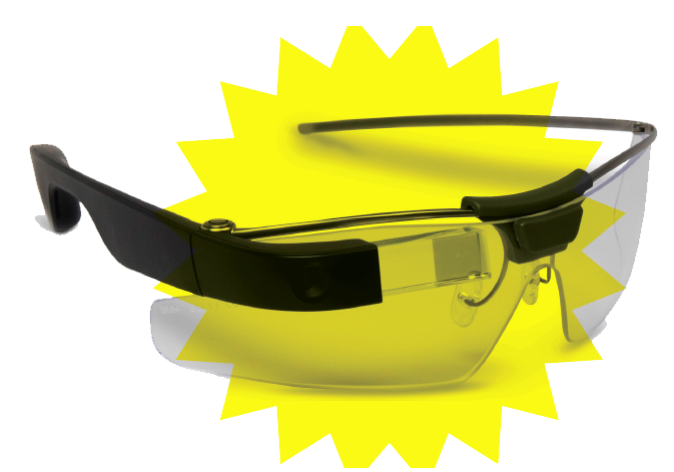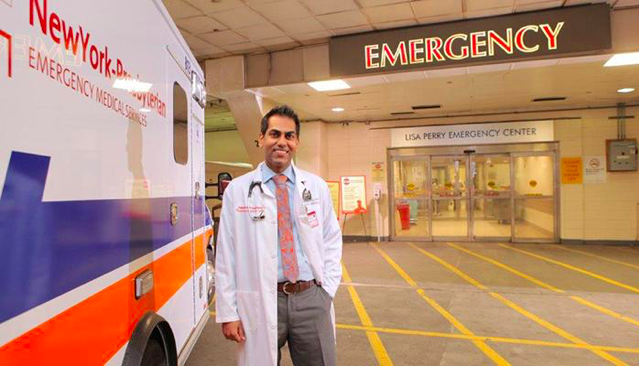In The News

Top MedTech Trends in 2024
In 2024 the landscape of healthcare is set to undergo transformative changes, driven by cutting-edge advancements in medical technology. From enhanced patient care to streamlined diagnostics to the integration of artificial intelligence (AI) and machine learning for smarter diagnostics to the rise of personalized medicine, this coming year holds immense potential for improving patient outcomes and reshaping the healthcare experience.
Read More
A light bulb went off: 'Alexa for telemedicine!'
As was the case with many healthcare organizations, the COVID-19 pandemic ushered in a significant increase in telehealth visits for Phoenix Children’s Hospital – especially in outpatient clinics. THE PROBLEM For a children’s hospital, this meant that often for the first time, parents and/or extended family could attend a doctor’s visit virtually and take a more active role in the care of their children. As the pandemic trailed off, many families said while they knew they needed to attend future visits in person, they wished the other family members, who had to return to work, could still be part of the care team. At the same time, like many provider organizations, Phoenix Children’s, which has a long ...
Read More
Blue Cross Blue Shield of Georgia to No Longer Cover No...
ALBANY, GA (WALB) - Many healthcare insurance companies have made a major change to their hospital emergency room coverage. Starting this month, Blue Cross and Blue Shield (BCBS) of Georgia and other insurance companies plans will no longer cover non-life threatening visits in the ER. BCBS is encouraging their policy holders to visit alternative care providers, depending on their symptoms. For instance, if it's a cold or sore throat, they're pushing their customers to go to their primary care physician, and if the office is closed then go to an urgent care facility or call a telemedicine service. Blue Cross Blue Shield of Georgia sent letters about its policy change last month. Officials said policy hold...
Read More
Patients are Flashing Doctors in Telemedicine Apps, and...
Weird things happen on the Internet, even to doctors. These days, anyone with an Internet connection can reach a doctor at anytime and from anywhere. Typically, it costs about $40 to $50 to schedule a video visit with a physician, via a crop of venture-backed mobile apps like MDLIVE and Doctor on Demand. The doctors using these apps typically deal with colds and flus, but from time to time, something a lot more horrifying happens: Full frontal exposure. Specifically, male patients are flashing their doctors. "There was a period where it was happening to some of our doctors once a week," recalls Bob Kocher, an investor in Doctor on Demand. Kocher says it did not happen more frequentl...
Read More
Primary Care Telemedicine Produces High Patient Satisfa...
A new study published in the Annals of Family Medicine found that patients who were offered primary care telemedicine during a pilot program in Pennsylvania experienced high satisfaction with the service. JeffConnect, an initiative launched at Thomas Jefferson University in 2015, was used to make primary care video visits available to willing participants. During the pilot program, patients could access video telemedicine consults for free to encourage participation. Physicians were asked to offer the service to all their patients. Thirty-two patients qualified to receive primary telemedicine care for reasons including chronic disease management, follow-up of a recent acute issue, a new acute issue, and review of lab results. When ph...
Read More
The Massive Benefits of Tele-Psych Have Yet To Be Reali...
With a decline in providers and an increase in demand, the need for supplementary psychiatric services has never been clearer. Now, healthcare companies are scrambling to set up tele-psych networks, some opting for acquisition while others build from within. The steady hum of voices and buzzers in the emergency department slowly escalates as staff gear up for a busy Friday night. The summer months bring with them a restless crowd of acutely ill patients. Dr. Schneider scans the board for his next patient. Jack, 32, has been off his psychiatric medications since moving, four months ago. He is here this evening because his thoughts of suicide have become both more frequent and more forceful, and he is afraid he will hurt himself. There is no d...
Read More
Why I Left the Hospital System and Started Working in T...
As the demand for hospital workers rises and the number of doctors declines, many in the health-care industry are increasingly frustrated. Jessica Knox was so discouraged that after finishing her residency in preventative medicine in 2015, she never pursued clinical work. Instead, Knox joined a young telemedicine startup called Nurx, which provides reproductive health care and advice for patients through an app and messaging system. Although Knox touts the benefit of a remote system of patient care for some aspects of medicine, she remains convinced that telemedicine will never totally replace traditional medicine. And that’s a good thing, she says. Source: https://www.technologyreview.com/s/607853/why-i-left-the...
Read More
Telehealth Counseling Study Shows Value Against In-Pers...
A recent study conducted by four large health systems found that telehealth consults were just as effective as in-person visits for women who'd undergone genetic testing for beast or ovarian cancer. August 10, 2017 - A new study is reportedly one of the first to prove that telehealth counseling is just as good as in-person counseling for genetic test results. While the study, conducted in 2014 by researchers from four major health systems, focused on women who’d undergone genetic testing for predisposition to breast or ovarian cancer, it could pave the way to development of a telehealth protocol for genetic test consults and counseling. "This is one of the first studies to show comparable outcom...
Read More
400K New Yorkers opted out of health insurance in 2015
More than 400,000 tax filers in New York state went rogue and failed to obtain health insurance in 2015 — and many were required to pay a tax penalty of at least $325 under ObamaCare, according to new IRS data reviewed by The Post. Records show that 405,610 defiant or ill-informed New Yorkers paid a combined “shared responsibility payment” fee of over $186 million under the Affordable Care Act in 2015, the most recent year for which data is figure available. That number accounts for more than 4 percent of the state’s 9.6 million tax filers. But the penalty for non-compliant individuals jumped to at least $695 for filers for both 2016 and 2017. The taxman collected $3 billion nationwide from 6....
Read More
VA removes red tape to increase access to care
Imagine the day that you can see your medical provider from anywhere in the country, including from the comfort of your own home. You wouldn’t have to take a full day off of work, travel long distances or spend hours in a hospital waiting room. Thanks to the age of smart phones and other advanced technology, that day has come. And it couldn’t have come at a more critical moment. Across the nation, wait times in the private sector for new patient appointments have increased 30 percent in the last three years, including in major cities such as Seattle, Boston, Denver and Los Angeles, according to a recent survey. Telehealth technology is revolutionizing how Americans access health care. Health care professionals have been us...
Read More
Online Training, Cetification Offered for Virtual Care ...
https://www.cmeuniversity.com/course/disclaimer/112629
Read More
Welcome to Google Glass Enterprise Edition
Google’s reboot of its much-hyped augmented reality headset takes the device in an important new direction. Through targeted projects with “Glass Partners,” Glass EE is poised to find important applications in healthcare. Google Glass Explorer was announced to the public with much hype in April 2012 by Google co-founder Sergey Brin. Many speculated that Glass and the new class of devices it would subsequently create would be the next evolution in personal computing. In the original product announcement video, Google presented a vision of the future in which Glass would merge the physical world around you with your smartphone, placing navigation, emails, and social media literally within eyeshot through the use of augmented reali...
Read More
Department of Veterans Affairs Aims to Trump State Tele...
The U.S. Department of Veterans Affairs (“VA”) is taking a significant step towards expanding needed services to Veterans by proposing a rule to preempt state restrictions on telehealth. Most states currently restrict providers (including VA employees) from treating patients that are located in that state if the provider is not licensed there. As a result, the VA has had difficulty getting a sufficient number of providers to furnish services via telemedicine for fear that they will face discipline from those states for the unlicensed practice of medicine. The VA has a real need for expanding its telemedicine capabilities as many of its patients are located in rural and underserved areas. The VA’s top clinical...
Read More
How Robots Are Changing the Way You See a Doctor
The following feature is excerpted from TIME Artificial Intelligence: The Future of Humankind, available at retailers and at the Time Shop and Amazon. Medicine is both art and science. While any doctor will quickly credit her rigorous medical training in the nuts and bolts of how the human body works, she will just as adamantly school you on how virtually all of the decisions she makes—about how to diagnose disease and how best to treat it—are equally the product of some less tangible measures: her experience from previous patients; her cumulative years of watching and learning from patients, colleagues and the human body. Which is why the idea of introducing machines into medicine ...
Read More
TELEMEDICINE IS FORCING DOCTORS TO LEARN 'WEBSIDE' MANN...
NO ONE KNEW exactly when the girl would die, but everyone knew it would be soon. A 12-year-old with end stage cancer, the child's parents had recently moved her from the hospital to her home in the suburbs of Los Angeles. Some days later the girl's breath quickened, and her father phoned the family's hospice nurse. Please come, he said. He was worried about her breathing. The nurse knew the visit would require more than four hours of her time: a two-hour drive in each direction, plus her time with the girl. Why don't we connect over FaceTime, she asked. The father agreed, and they connected. The nurse asked the father to move his daughter gently to her side. Then to her back. To lift the child's shirt. To show her the expans...
Read More
NewYork-Presbyterian Hospital says Telehealth Helped Sl...
While the average emergency room wait times for low-acuity patients were up to two-and-a-half hours at NewYork-Presbyterian/Weill Cornell Medical Center, the provider’s Telehealth Express Care service can get patients in and out in 35 minutes. NewYork-Presbyterian is steadily moving to use telehealth to its advantage. As a result, emergency room wait times at its Weill Cornell Medical Center have been slashed by more than half because of its Telehealth Express Care virtual visit service. For example, average emergency room wait times for low-acuity patients used to mean a two to two-and-a-half hour wait. But now, the Telehealth Express Care service can get low-acuity patients in and out, from arrival to discharge, in 35-40 minu...
Read More

